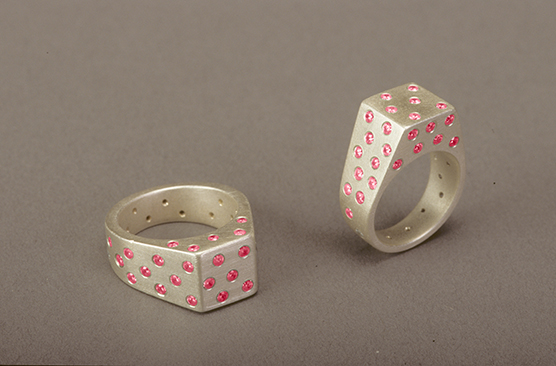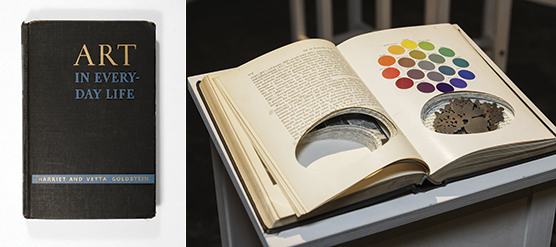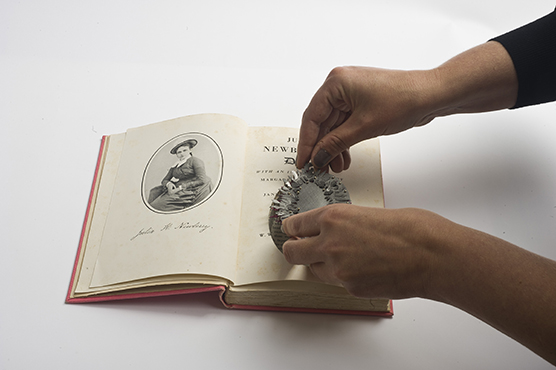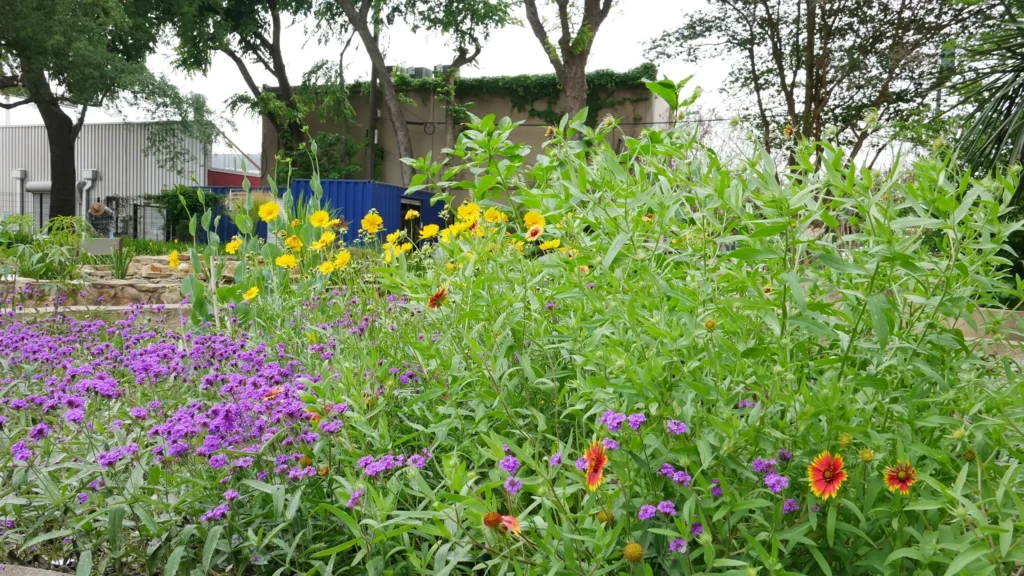
Sondra Sherman, “Listen the Wind Necklace,” 2010. Sterling silver (hollow construction). Photo courtesy of Sienna Patti Contemporary.
In honor of Women’s History Month, Houston Center for Contemporary Craft (HCCC) joined The National Museum of Women in the Arts in “Can You Name Five women Artists?,” a social media campaign to raise awareness of women artists. This is our third blog entry about a female artist currently exhibiting in our galleries. To read other articles in our series of #5womenartists, click here.
This week, HCCC’s Curatorial Fellow Sarah Darro asked Sondra Sherman, whose work is currently displayed in the solo exhibition Found Subjects, a few questions about her work and influences.
Sarah Darro: Be it adding pinstripes to a string of pearls or replacing the diamond of an engagement ring with an industrial tool, like a circular level, much of your work explores, and often subverts, archetypes in jewelry of gender and romance. Do you believe that there is a responsibility for jewelers to respond to social issues and/or be conscious of the gender stereotypes within jewelry and metalsmithing itself?
Sondra Sherman: I do not think there is a responsibility for jewelers to respond to social issues. I don’t believe in rules for creative production. I also find a noble social cause is sometimes used to justify lazy visual art.
I do think there are opportunities for jewelers to respond to social issues in the distinctive language and context of jewelry which are particularly potent because of its traditional symbolism, social roles, and the context of the body or wearer.
The series you refer to, ‘Hidden Agender’, evolved from thinking about the traditional role of jewelry as social identification. People often signify their social status or belonging to a particular social group in their jewelry. As I researched jewelry conventions, I noticed how the commercial jewelry industry recognized and reinforced gender stereotyping by very subtle means- like the range of ring sizes offered in a certain type of ring or more overtly by sales catalogue names – like ‘gents rings’.
I think this is an opportunity offered by jewelry because it has been used symbolically as part of social rituals and to support many social conventions.


SD: Your series demonstrate strong conceptual frameworks, which are often supported by installation and display methods. For instance, your works in Found Subjects are displayed on library lecterns, foregrounding the intrinsic relationship between the viewer, books and jewelry inside them. Given that the body holds an important context for jewelry, when worn, how does the meaning of your work change?
SS: Though I provide display methods or installations for exhibition situations, the display usually references the personal or domestic realm. I feel that jewelry which identifies itself as such by its format or mechanisms always implies the context of the body or wearer, but the meaning becomes more personalized in relationship to the identity of the wearer when actually worn. I also think the meaning can shift depending on the social context in which the wearer is encountered.


SD: Do you have a female role model that has inspired you and your career? If you do, how has this person influenced your life?
SS: My mother. She was an early ‘women’s libber’ for her social milieu. As with many women of her generation, she discovered she was not completely fulfilled as a 1960’s housewife. She went to work as a social worker and put herself through graduate school in that field. She taught me to question social norms and to pursue challenging work which supports my personal values and social ideals.
She always supported and never questioned my interest in art, whether that meant (for many years)- driving me to free Saturday morning art classes from the Students Art League, or taking me to special exhibitions at the Philadelphia Museum of Art – because she knew they were significant even though she did not understand them.
I think that kind of support can be taken for granted in more sophisticated social milieus, but I see with students in State Universities how significant that was. In teaching, my life is enriched when I let students take me out of my comfort zone, as my mother allowed me, in support of their individual interests and opportunities.

About Sondra Sherman
Sondra Sherman is Associate Professor of Art and Head of Jewelry and Metalwork at San Diego State University in California. She received her MFA from the Academy of Fine Art in Munich, Germany, and her BFA from Tyler School of Art, Philadelphia, in Pennsylvania. She has been the recipient of many awards including the Rhode Island Council on the Arts Individual Artist Fellowship, the Louis Comfort Tiffany Foundation Emerging Artists Fellowship, the Pennsylvania Council on the Arts Fellowship, the Mid-Atlantic Regional National Endowment for the Arts Fellowship, as well as a Fulbright Scholarship for Study Abroad. Sherman’s artwork is included in the following public collections: the Philadelphia Museum of Art; the Boston Museum of Fine Arts; the Metropolitan Museum of Art, New York; the Museum of Arts and Design, New York; the Racine Art Museum; the Smithsonian Institution’s Renwick Gallery; the Rhode Island School of Design Museum; and the City Museum of Turnov, Czech Republic. For more information about Sondra Sherman, please visit, https://sondra-sherman.com .
Found Subjects, a solo exhibition of Sondra Sherman’s work, is on view February 5 – May 8, 2016 in the Front Gallery at HCCC.
We’d love to hear from you!
Who are your favorite women artists and why? Comment below, or send us an email with your response. You can also tweet us @CraftHouston, or share images of female artists who inspire you via Instagram!
